Heirloom Selection
Heirloom Selections
-
Main Crop Broccoli Bravado
BEST TO START INDOORS
Start seeds 4 or 5 weeks before last expected spring frost and again in midsummer for a fall crop. Sow seeds 1 inch apart in a container of seed starting mix, cover 1/2 inch deep and keep evenly moist. Provide a strong light source until seedlings are ready to plant out. When seedlings are 3 to 4 inches tall, gradually acclimate to outdoor conditions, then transplant 12 to 18 inches apart into rich, well-drained soil in full sun.
TO START OUTDOORS
Sow seeds in well-worked, fertile soil in full sun. Plant groups of 2 to 3 seeds 1/2 inch deep and 12 inches apart. Space rows 18 inches apart. Thin to 1 strong seedling per group so plants have room to mature and grow.
GROWING NOTES
Broccoli needs rich, fertile soil and cool growing weather to produce big heads. Prepare soil well and do not let seedlings get too crowded before thinning or transplanting or the heads will be stunted. Keep well watered and weeded. Feed at least monthly with all purpose fertilizer. Use non-toxic B.T. (Bacillus thuringiensis) products to repel caterpillar pests as necessary.
HARVEST AND USE
Harvest the main head before florets open by cutting about halfway down the stalk. This will encourage numerous side shoots to form for extended picking from each plant.
Regular price $3.69Sale price $3.69Unit price / per -
Butterfly Flowers Swallowtail Fennel
PERENNIAL
USDA zone 5-9
TO PLANT DIRECTLY IN THE GARDEN
In spring when danger of hard frost is past, sow seeds 1 inch apart in finely worked, well-drained, fertile soil in full sun. Cover 1/2 inch deep, firm soil and keep seed bed moist. Germination takes 2 to 3 weeks. After seedlings are well established, carefully thin or transplant 1 1/2 feet apart to allow plants room to mature.
TO START EARLY INDOORS
Sow thinly in a container of seed starting mix, 4 to 6 weeks before last expected frost. Keep warm and evenly moist, and provide a good light source. When seedlings are 3 to 4 inches tall, acclimate gradually to outdoor conditions before carefully transplanting as above.
GROWING NOTES
Plant in very well-drained soil. Seedlings grow slowly at first; watch out for them closely as their bronze color makes them easy weed out by accident.
The branching feathery fronds crowned by intricate yellow flowers provide valuable nectar and pollen to a wide range of butterflies, ladybugs, lacewings and other beneficial insects. Colorful blue-green, and copper-bronze foliage is a beautiful contrast with the green foliage and bright colors of summer annuals.
Regular price $3.69Sale price $3.69Unit price / per -
Butterfly Zinnias Summer Pinwheels
ANNUAL
Summer/fall bloom.
Frost tender.EASY TO START DIRECTLY IN THE GARDEN
Sow seeds in well-worked soil in full sun when danger of frost is past and weather is warm and above 50°F (10°C) both day and night. Space seeds 2 to 3 inches apart in rows 12 inches apart, cover about 1/2 inch deep and gently firm soil. Keep soil evenly moist while awaiting germination.
TO START EARLY INDOORS
Four weeks before last frost date, sow seeds 1/2 inch deep and 3 inches apart in a container of seed starting mix. Keep warm and moist and provide a strong light source until seedlings are ready to plant outside when temperatures rise above 50°F (10°C) day and night.
THIN OR TRANSPLANT
Space seedlings 8 to 12 inches apart when large enough to handle so plants have good air circulation and enough elbow room to grow and bloom freely.
GROWING NOTES
Zinnias can grow in ordinary garden soil in full sun. For large, abundant flowers, thin before seedlings get crowded. Adequate spacing and regular, even watering discourages mildew and keeps zinnias productive. Pick just as blossoms begin opening and petals are tight. Cut long stems well back into the plant to keep plants branching low and producing best blooms for summer long bouquets.
Regular price $3.39Sale price $3.39Unit price / per -
Butterfly Coreopsis Incredible
ANNUAL
Summer/fall bloom
Frost tenderTO START OUTDOORS
Plant after frost danger is over and night temperatures are evenly above 50°F (10°C). Sow seeds in a well-worked seedbed in full sun, 2 in. apart, with rows 12 in. apart. Cover very lightly and gently firm soil. Keep soil evenly moist; germination takes 10-15 days.
TO START EARLY INDOORS
3-4 weeks before last expected frost, sow seeds 1 in. apart in seed starting mix and cover very lightly. Keep warm and moist and provide a strong light source until seedlings are well established. Transplant after gradually acclimating to outdoor conditions.
THIN OR TRANSPLANT
Space seedlings 10 in. apart when large enough to handle.
GROWING NOTES
Coreopsis grows easily in ordinary garden soil in full sun. Be sure to thin seedlings before they get crowded. Incredible grows 2 to 2 1/2 ft. tall and these sturdy, long blooming garden performers and can tolerate hot and dry weather. Pick these decorative flowers often for lovely country style bouquets. Coreopsis are deer resistant and blossoms provide ample food and nectar for butterflies, bees and many other pollinators. After bloom is over, their seed heads provide nutritious food for hungry songbirds.
Regular price $3.99Sale price $3.99Unit price / per -
Bulbing Onions Golden Sweet Spanish
FOR BEST RESULTS
Sow seeds in early spring as soon as soil can be worked; in mild winter areas, seeds can also be sown in fall to overwinter for a head start in spring growth. They have a broad planting range, being on the cusp of intermediate and long day onions.
To Start Early Indoors: Sow 1 in. apart in a container of seed starting mix and cover 1/4 in. deep. Provide a strong light source until seedlings are 2 to 3 in. tall. Transplant 4 in. apart, burying crowns 1 in. deep.
To Start Outdoors: Sow seeds in well-worked, fertile soil in full sun. Space 1 in. apart in rows 8 in. apart. Cover 1/4 in. deep, firm soil well over seeds, and keep evenly moist. Thin seedlings gradually to a final 4 in. spacing, using the tasty thinnings.
GROWING NOTES
Before planting, thoroughly work compost or well-aged manure and an organic, all-purpose fertilizer into the soil. Keep onions well-weeded and mulch plants once soil warms up to conserve moisture. Feed onions lightly with an all-purpose fertilizer several times during the growing season. The “bite” or spiciness of onions depends on your soil type and composition.
HARVEST AND USE
Harvest midsummer when bulbs are sized up and about half the onion tops are bent over. Stop watering and bend the rest of the tops down. After another 7 to 10 days or when tops are dry, pull the bulbs. If possible, let the onions dry in the sun for 5 to 7 days. Store bulbs in a cool, airy place.
Regular price $3.39Sale price $3.39Unit price / per -
Heirloom Dry Beans Soup Mix Blend
START SEEDS OUTDOORS
Don’t plant too early; cold conditions prevent good bean germination. In late spring, when nights are securely above 55°F (13°C), sow seeds in well worked, fertile soil in full sun. Poke seeds in 1 inch deep and 4 inches apart in rows 1 1/2 to 2 feet apart.
GROWING NOTES
If first sowing comes up unevenly, replant right away; new seedlings catch up quickly. Bean seedlings are tempting treats to birds; watch carefully and protect with netting if necessary.
HARVEST AND USE
Check out our harvesting video!
When the beans are hard and smooth inside dry and leathery pods, harvest the whole crop at once, or, if frost or excessive rain threatens, pull entire plants and finish drying in a sheltered spot. Shell out the completely dry beans by hand or put whole pods in a pillowcase and whack it on the ground to “spill the beans” from pods. Put cleaned, shelled beans in freezer for 3 to 4 days to eliminate any insects, then store in glass jars in a cool dry place.
Note: freshly grown dry beans will cook faster than store bought ones. Soak overnight first, then cook up with a bay leaf, garlic and savory herbs.
Regular price $4.39Sale price $4.39Unit price / per -
Early Pole Beans Spanish Musica
START SEEDS OUTDOORS
In spring once weather is warm and night temperatures stay securely above 55°F (13°C), plant seeds in well-worked, fertile soil in full sun. Erect strong stakes, tripod poles, or trellis at planting time to support vines. Plant seeds 1 inch deep and 4 inches apart along a trellis, or if planting around tripods or stakes, plant 4 to 6 seeds 4 inches from each pole, thinning seedlings to 3 best plants.
GROWING NOTES
Tender crispy beans are an easy reliable crop to grow, but do not plant seeds too early as cold conditions prevent good germination. If first sowing comes up unevenly, replant right away; new seedlings will catch up quickly. Birds are often attracted to young bean seedlings, so watch carefully and protect with netting or floating row covers if necessary. Avoid cultivating plants or picking pods when plants are wet.
HARVEST AND USE
Musica’s strong vines are heavy bearers, so plan to harvest often. The more you pick, the more plants will produce. Harvest when beans are broad and 7 to 9 inches long. Slice in pieces and cook just until tender to enjoy their fine flavor and meaty texture. Serve hot, or cool and toss with herbed vinaigrette for a delicious green bean salad.
Regular price $4.99Sale price $4.99Unit price / per -
Bonus Pack Wheatgrass For Juicing
GROW IN POTS INDOORS OR OUT
Wheatgrass can be grown indoors year round; it prefers temperatures between 65-75° F (18 to 24° C) or or grow outdoors in pots after spring weather is warm, and nights are over 50° F (10° C). This generous packet provides more than enough seed for 6 separate sowings in 6 inch pots. Disinfect pots before use by soaking in a solution of 1 part bleach and 9 parts water for 30 minutes and air dry.
GROWING AND HARVESTING
Fill a 6 inch in diameter or larger pot (that has a drainage hole) with moistened organic planting mix. Sprinkle seeds evenly over the surface about 1/4 inch apart. Cover 1/2 inch deep with planting mix. Water gently but thoroughly. Check often; keep moist but not soggy. Keep pot in bright light or full sun. Harvest by cutting with scissors when wheatgrass is 4 to 6 inches tall, about 10 to 14 days after sowing. Wheatgrass grows back for a second harvest, but the second harvest will be weaker.
For a constant supply, sow more seeds in a new pot weekly, always using fresh soil mix. Harvest and use pots of grass in succession. After the second harvest in each pot, discard and start again with more seeds and fresh soil mix. (Each sowing uses up the available nutrients in soil mix so discard and use fresh mix) A 6 inch pot of wheatgrass will yield about 5 to 6 ounces of fresh juice.
HOW TO USE
Wheatgrass must be consumed as juice. If you want to juice regularly, we recommend buying a specialized wheatgrass juicer, which makes juicing easy and produces a superior product. A lesser, but passable alternative is to put a handful of cut wheatgrass in a blender with a cup of water, blend until liquefied and carefully strain out pulp from the juice. Drink immediately or keep refrigerated and drink soon: juice loses quality and nutrient value quickly. Drink 1 ounce of wheatgrass juice per day for general health.
Regular price $6.99Sale price $6.99Unit price / per -
Heirloom Chiles Bulgarian Carrot
STARTING SEEDLINGS
In early spring, start indoors about 2 months before night temperatures stay reliably 50-55°F (10-13°C). Sow seeds 1/4 inch deep and 1 inch apart in a container of seed starting mix. Keep moist but not soggy, and very warm 80-85°F (27-30°C). Provide a strong light source until seedlings are ready to plant outside. When seedlings are 2 inches tall, transplant into deeper individual containers. Maintain at 70-75°F (21-24°C).
Feed with half strength fertilizer every week until weather is warm enough to gradually acclimate seedlings to outdoor conditions. Transplant 1 1/2 feet apart into rich soil in full sun.
GROWING NOTES
Chiles need warm conditions; don’t transplant outdoors until night temperatures stay securely above 55°F (13°C). Prepare soil well with aged manure or compost. Plant only robust seedlings with well-developed roots. Mulch plants to maintain even soil moisture. Keep well weeded, watered and fertilized.
HARVEST AND USE
Harvest when chiles have colored up to deep orange with a high gloss. Use these hot and fruity flavored little chiles for delicious salsas, hot sauces, spicy pickled peppers or in any recipe using hot chiles. Carrot chiles have thick flesh and do not dry well, so freeze in heavy Ziploc bags if preserving for future use.
Regular price $3.69Sale price $3.69Unit price / per -
Heirloom Cucumbers Lemon Cucumbers
START SEEDS OUTDOORS
Plant heat-loving cucumbers in full sun only when weather is warm and settled and night temps stay above 50°F (10°C), first amending soil well with aged manure or compost. Sow groups of 2 to 3 seeds, 1 inch deep and 18 inches apart. When the baby seedlings are 2 inches tall, thin out extras, leaving one strong seedling per group. After thinning, provide a 3 to 5 foot strong vertical support or tomato cage around each seedling and train the vines up the supports as they grow. Growing vigorous, heavy-bearing cucumber vines up supports makes it easier to harvest the cucumbers, saves garden space, and helps prevent disease.
GROWING NOTES
Protect seedlings from marauding birds with plastic berry baskets, removing before plants get crowded. Shallow-rooted cucumbers need adequate and consistent moisture to produce sweet tasting, nicely formed cucumbers. Avoid overly wet or dry periods for good quality fruits.
HARVEST AND USE
For best quality, sweet tasting fruits, be sure to pick young lemon cucumbers when they are still pale green with just a hint of lemon color on their skins. Bright yellow fruits are pretty but overmature and they will have tough skins and seeds. Enjoy the freshly picked, lemon-shaped cucumbers still warm from the sun as snacks and in salads. These old-fashioned cucumbers also make fine tasting pickles, both sweet and dill.
Regular price $2.99Sale price $2.99Unit price / per -
Heirloom Viking
These are truly beautiful potatoes: large, round in shape, with a rich, dark purple skin lightly dappled with pink splashes and stripes. Inside, the fine-textured, firm flesh is creamy white, smooth, and truly delicious. Heirloom Viking was first introduced almost 60 years ago by the potato improvement program at North Dakota State University.
Viking tubers always cook up meaty and moist with a rich, sweet, buttery flavor. In taste tests, our potato loving family rated them better tasting than “Yukon” types! They are great eating, whether you bake, mash or cut them up to roast up crisp in the oven. This high-yielding and reliable variety has good scab resistance. You'll want to grow this tasty all-purpose potato every season. Viking is an excellent keeper in storage.
Early: 64-78 days / Type: Determinate
1 lb. bag (plants a 10 foot row)
Mix and match your own potato patch:
Save 10% when you buy any 3 varieties or more!
Discount taken at checkoutRegular price $19.95Sale price $19.95Unit price / per -
Heirloom Russian Kale Wild Garden Frills
TO START DIRECTLY IN THE GARDEN
As soon as ground can be worked in spring, prepare a well-drained, fertile garden bed in full sun. Sow seeds 2 inches apart in rows 12 to 18 inches apart. Cover 1/2 inch deep and keep soil evenly moist to ensure good germination. Sow again in late summer for another cold-hardy crop.
TO START INDOORS
Sow seeds in a container of seed starting mix 2 inches apart and cover 1/2 inch deep. Keep moist and provide a strong light source until seedlings are 3 to 4 inches tall then plant outdoors. Space 10 to 12 inches apart so plants have room to mature.
GROWING NOTES
Kale tastes best in cool weather so sow spring crops early. If sown in late summer, kale will yield through fall and winter except in the coldest climates. Frost actually enhances kale leaves’ color, flavor and sweetness. Mulch to retain moisture in summer and before the ground freezes to protect the roots of fall crops.
HARVEST AND USE
Begin harvesting outer leaves when plants have 6 to 8 leaves. Vitamin-rich kale is delicious in hearty winter soups, stews and sautés; or braise the beautiful leaves with garlic and olive oil in traditional Mediterranean style. Pull and discard once plants begin to bloom since the leaves of flowering stalks get tough and bitter.
Regular price $4.89Sale price $4.89Unit price / per -
Heirloom Chinese Cucumber Suyo Long
START SEEDS OUTDOORS
Plant heat loving cucumbers only when weather is warm and settled and night temperatures stay above 50° F (10° C). Amend soil well with aged manure or compost. Sow in groups of 2 to 3 seeds 18 in. apart and 1 inch deep.
When seedlings are 2 in. tall, thin out extras, leaving one strong seedling per group. After thinning, put 4–5 ft. vertical supports or individual tomato cages around each seedling and train vines up supports as they grow. This method makes it easier to harvest straight fruits, saves garden space, and helps prevent further disease.
GROWING NOTES
Protect seedlings from marauding birds with plastic berry baskets, removing before plants get crowded. Shallow-rooted vines need adequate and consistent moisture to produce sweet tasting, nicely formed cucumbers. Avoid overly wet or dry periods for good quality fruits.
HARVEST AND USE
Cut rather than pull fruits from vines before seeds are large inside. Harvest every few days for longest fruit production. These juicy tender cucumbers need no peeling. Slice and enjoy for refreshing snacks, in salads and sandwiches. Eat cucumbers within a day or two of picking for best taste and quality.
Regular price $4.89Sale price $4.89Unit price / per -
Italian Heirloom Tomato Costoluto Genovese
STARTING SEEDLINGS
In early spring, start indoors about 6 to 8 weeks before outdoor night temperatures are reliably in the 50-55°F (10-13°C). Sow seeds 1/4 inch deep and 1 inch apart in a container of seed starting mix. Keep moist but not soggy, and very warm, 80°F (27°C). Provide a strong light source until seedlings are ready to plant outside.
When 2 inches tall, transplant into individual 4-inch pots, burying stems up to base of leaves. Maintain at 70-75°F (21-24°C). Feed with half-strength fertilizer every 2 weeks until ready to plant, then gradually acclimate seedlings to outdoor conditions. When nights reach 55°F (10°C), transplant 3 feet apart into rich soil in full sun.
GROWING NOTES
Prepare soil well with aged manure or compost. Plant several inches deeper than seedlings were growing in containers. Provide strong stakes or tall wire cages at planting time. Mulch to provide even moisture retention; don’t overwater once fruit begins to ripen.
HARVEST AND USE
For best flavor, pick red-ripe and don’t store in the refrigerator. These tender, juicy, plump tomatoes have a naturally “pleated” shape. Slice thickly and show off their scalloped edges. Drizzle with good olive oil, a pinch of coarse salt, pepper and chopped fresh dill or basil. Enjoy!
Regular price $4.89Sale price $4.89Unit price / per -
Bonus Pack Texas Bluebonnets
Annual USDA Zones 5-8
Bluebonnets require full sun and well-drained ordinary soil of moderate alkalinity. They will not tolerate heavy clay soils, so if you have dense clay soil, grow them in raised beds amended with compost and sand to give them the good drainage they need. Bluebonnets are drought-adapted; do not overwater them during active growing periods.HOW BLUEBONNETS GROW AND WHAT THEY NEED
Bluebonnet’s large, hard-coated seeds respond best to late summer/fall planting as exposure to winter soil abrasion. Precipitation and weather changes break down the naturally tough outer coat of the seeds to produce germination in fall or early spring. As spring breaks, plants respond to sun and warmth, and then bloom gloriously, attracting happy bees and butterflies. The beautiful flower spikes are deep blue with white tips. After flowering, seedpods form, dry and drop seed to rebloom the next season.
SOWING AND GROWING BLUEBONNETS
Plant seeds in late summer or early fall to overwinter and bloom the next spring (in hard winter areas, sow in very early spring). Plant in ordinary garden soil, preparing the soil by removing weeds, grass and stones. Evenly loosen the top 4 inches of soil with a shovel or digging fork and break up soil clumps, then rake smooth.
Broadcast the seed over the seed bed, aiming for 6 inch spacing. Cover lightly with soil, tamping it down to make sure the seeds get good soil contact. Water in well at planting time, then keep moist but on the dry side until seasonal rains take over. Seeds may take 3 to 4 weeks to slowly and unevenly germinate. Foliage rosettes of 5-7 leaves will develop close to the ground and overwinter that way. (If cold weather comes on, seeds may delay germination until the next spring.) After germination, seedlings develop long tap roots and usually don’t require additional irrigation.
In mild early spring weather, bluebonnets will actively begin growing again. Plants rapidly develop multiple 8-12 inch flowering stalks that bloom in a gorgeous blue color with white tips. After the colorful flowers fade, green seedpods form. When they are dried up and dark brown, pods pop open and drop seed to self-sow for next spring’s flowers.
Regular price $9.99Sale price $9.99Unit price / per -
‘Hamburg Rooted’ Parsley
This traditional heirloom vegetable is grown for its 8-to-10 inch roots that are shaped like parsnips or carrots. Hamburg rooted parsley adds a wonderful mellow parsley flavor to soups and stews.Regular price $1.99Sale price $1.99Unit price / per -
Heirloom Chard Garden Rainbow
START SEEDS OUTDOORS
In early spring, when danger of frost is over, sow seeds in well-worked, fertile soil in full sun. Sow seeds 1/2 inch deep and 1 inch apart in rows 10 inches apart, or broadcast thinly for bed planting. Firm soil well over these irregularly shaped seeds to ensure good germination. If first sowing germinates unevenly, plant more seed as seedlings catch up quickly. When large enough to handle, thin seedlings to final spacing of 8 to 10 inches apart so these large plants have room to grow and mature. Transplant extras or enjoy young thinnings as early greens and salads.
GROWING NOTES
Chard grows well in a wide range of conditions and can take some light frost. In mild winter areas, it can be grown year round. Give seedlings enough room, because chard grows into large vase-shaped plants 2 feet tall.
HARVEST AND USE
Begin harvesting when plants are well established and have at least 6 to 8 leaves. Both stalks and leaves make great eating. Chop and steam or sauté with garlic and olive oil. Use like spinach in lasagna or minestrone soup. Try tasty chard leaves stuffed and poached in broth with a dash of olive oil and fresh lemon.
Regular price $4.89Sale price $4.89Unit price / per -
Pollinator Flowers Early Blooming Beekeeper's Mix
ANNUAL
Spring/summer bloom
Frost tenderBEST TO START DIRECTLY OUTDOORS
In early spring, after all danger of frost is past, plant in a well-prepared garden bed in full sun. Shake packet to mix. Scatter the seed thinly and evenly over finely worked soil, aiming to have the seeds about an inch or so apart. Cover lightly, about 1/4 inch deep, and gently firm the soil over the seeds—a rake is handy for this step. Water thoroughly and evenly with a very gentle spray. Keep the seedbed moist while awaiting germination and while flowers are actively growing for the most blossoms.
GROWING NOTES
This fast-growing, early flowering annual mix blooms in succession and provides a sustained feast for bees and other pollinators. The many flower colors and shapes blend beautifully for bouquets.
Regular price $3.99Sale price $3.99Unit price / per -
Gourmet Ruby Chard Scarlet Charlotte
START SEEDS OUTDOORS
In early spring when danger of hard frost is over, sow seeds in well-worked, fertile soil in full sun. Sow seeds 1/2 inch deep and 2 inches apart in rows 10 inches apart. Firm soil well over these irregularly shaped seeds to ensure good germination. If first sowing germinates unevenly, plant more seed in the rows as seedlings catch up quickly. Thin when seedlings are large enough to handle, using thinnings as early greens. Final spacing should be 12 to 18 inches apart.
GROWING NOTES
Chard grows well in a wide range of conditions and can take some frost. In mild winter areas, it can be grown year-round. Thin seedlings well so the large 2 foot tall, vase-shaped plants have room to mature.
HARVEST AND USE
Begin harvesting when plants are well established and have 6 to 8 stalks. Both the crunchy succulent stalks and leaves make great eating. Chop and sauté chard with garlic and olive oil or pair with sautéed mushrooms and onions. Try steamed and topped with a sprinkle of vinegar or fresh lemon juice. Use like spinach in lasagna or minestrone soup.
Regular price $2.99Sale price $2.99Unit price / per -
Bonus Pack Early Blooming Beekeeper's Mix
ANNUAL
Spring/summer bloom
Frost tenderBEST TO START DIRECTLY OUTDOORS
In early spring, after all danger of frost is past, plant in a well-prepared garden bed in full sun. Shake packet to mix. Scatter the seed thinly and evenly over finely worked soil, aiming to have the seeds about an inch or so apart. Cover lightly, about 1/4 inch deep, and gently firm the soil over the seeds – a rake is handy for this step.
Water thoroughly and evenly with a very gentle spray. Keep the seed bed moist while awaiting germination and while flowers are actively growing for the most blossoms. The many flower varieties in this pretty mix will grow and bloom in succession throughout late spring and summer.
Regular price $9.99Sale price $9.99Unit price / per -
Heirloom Cucumbers Sweet Armenian
START SEEDS OUTDOORS
Plant heat-loving cucumbers only when weather is warm and night temperatures stay above 50° F (10° C). Amend soil well with age manure or compost. Sow groups of 2 to 3 seeds, 1 inch deep and 18 inches apart. When the baby seedlings are 2 inches long, thin out extras, leaving one strong seedling per group.
After thinning, provide a 3 to 5 foot strong vertical support or individual tomato cage around each seedling and train the vines up the supports as they grow. Growing vines up supports or in cages makes cucumbers easier to harvest, saves space, and promotes good air circulation.
GROWING NOTES
Protect seedlings from marauding birds with plastic berry baskets, removing before plants get crowded. Shallow-rooted cucumbers need adequate and consistent moisture to produce sweet tasting, nicely formed cucumbers. Avoid overly wet or dry periods for good quality fruits.
HARVEST AND USE
Armenians are heavy-yielding and can take both heat and humidity. For best quality, pick Armenians up to 12 inches long but before seeds get large.
Cut rather than pull cucumbers from vines. Armenians need no peeling; just slice thinly to show off their decorative edges, and enjoy in salads. Or cut in 2 inch pieces, halve, and scoop out flesh to make little scalloped cups to fill with tabouli, couscous or tuna, chicken or shrimp salad.
Regular price $2.99Sale price $2.99Unit price / per -
Heirloom Scabiosa Dark Night
HARDY ANNUAL
Spring/summer bloom
Can handle light frostFOR BEST RESULTS
Sow seeds 1 to 2 inches apart in a container of seed starting mix, 2 or 3 weeks before last expected frost. Cover 1/4 inch deep, keep moist and provide a good light source until seedlings are ready to transplant. Plant out strong, sturdy seedlings into fertile garden soil, spacing 12-15 inches apart in full sun.
TO START SEEDS OUTDOORS
Sow seeds in a well-drained, prepared garden bed in full sun as soon as soil can be worked in spring. Space seeds 8 to 10 inches apart in rows a foot apart and cover 1/4 inch deep. Keep seed bed moist until seedlings emerge in 12 to 15 days. Weed carefully and keep well watered. Thin sturdy seedlings to 12-15 inches apart.
GROWING NOTES
Plant in early spring to get sturdy plants that will flower throughout the summer and fall. Curving wiry stems are part of this plant's character; support them for best flowering displays.
Cut often for bouquets and to produce more blossoms. In mild winter areas, they are a short-lived perennial and will overwinter to bloom a second season.
Regular price $4.69Sale price $4.69Unit price / perNew -
Heirloom Amaranth Cinco De Mayo
ANNUAL
Summer/fall color
Frost tenderEASY TO START OUTDOORS
Sow seeds in full sun in ordinary well-worked garden soil in springtime once night temperatures reach 50°F (10°C). Space tiny seeds as thinly as possible. Cover very lightly with soil and keep moist until seedlings emerge in 7 to 10 days.
TO START EARLY INDOORS
Five to six weeks before last frost date, sow seeds 1 inch apart in individual pots or a container of seed starting mix, cover lightly and keep moist. Provide a strong light source until seedlings are ready to plant outside once danger of frost is over. Gradually acclimate to outdoor conditions before transplanting.
THIN OR TRANSPLANT
Final seedling spacing should be 12-18 inches apart, so they have room to grow and mature.
GROWING NOTES
Plants explode with sky rocket colors when they come to maturity in late summer. These easy to grow, dramatic foliage Amaranths prefer a warm, dry location in good garden soil. When established, the tall bushy plants can tolerate drought and need no extra fertilizer, but must have good drainage. For better branching, pinch the main bud when plants are about 18 inches tall.
Regular price $2.99Sale price $2.99Unit price / per -
Scented Geranium Trio IV: Fruit Cocktail
Three separate 3 1/2 inch pots with well-rooted, established starts for Apricot, Orange Fizz and Strawberry scented geraniums, ready to plant. All orders include our carefully written, comprehensive Planting and Growing Guide for success when planted in the garden, in pots/window boxes, or indoors as houseplants.
Sold as a set of 3 plants, individually potted, carefully packed and shipped to you at the right time for planting in your climate zone, March through May. Plant orders ship directly from our grower.
 See Full Description Regular price $34.95Sale price $34.95Unit price / per
See Full Description Regular price $34.95Sale price $34.95Unit price / per

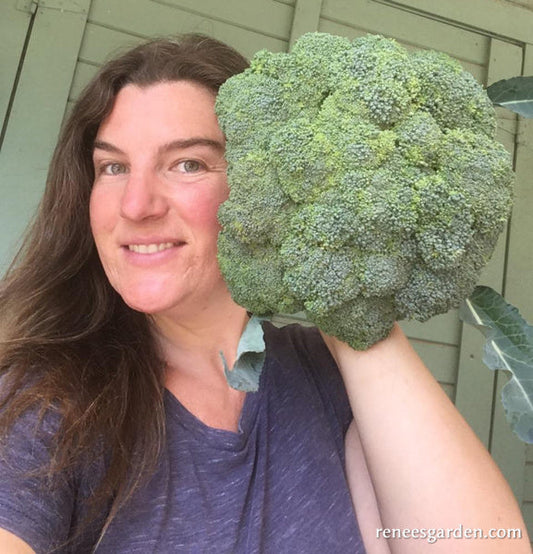

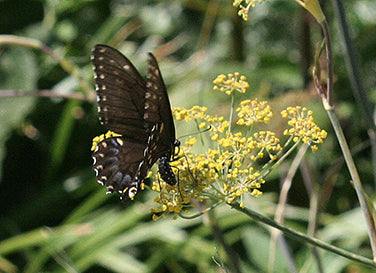

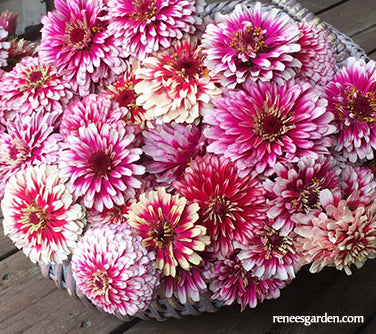

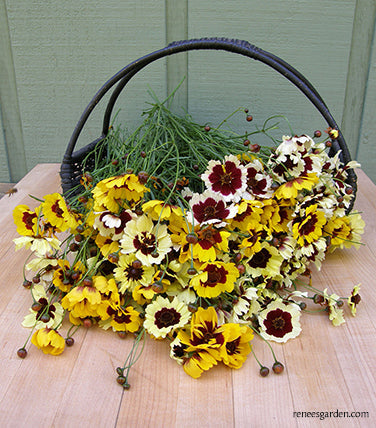

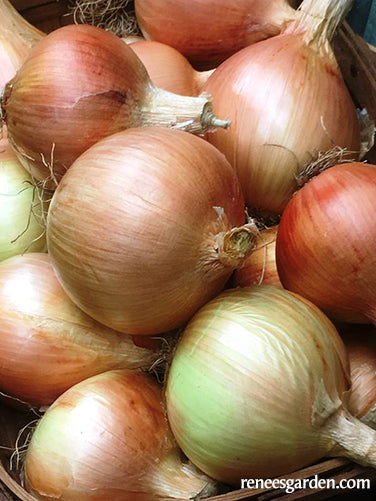

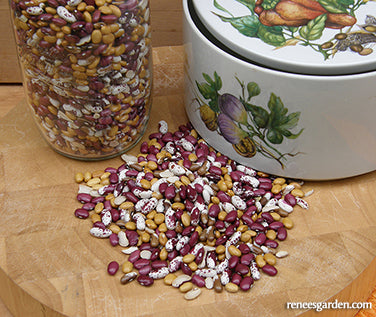

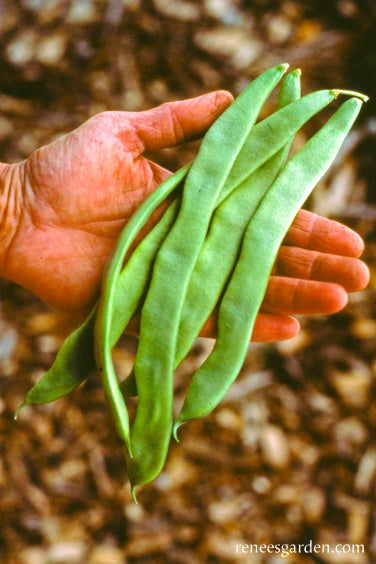

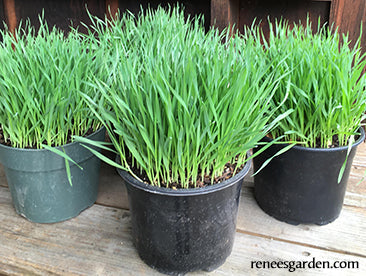

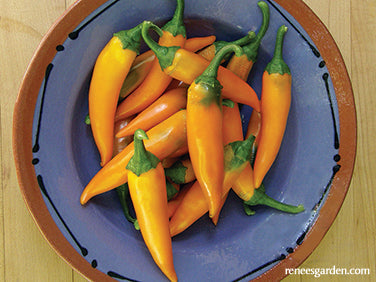

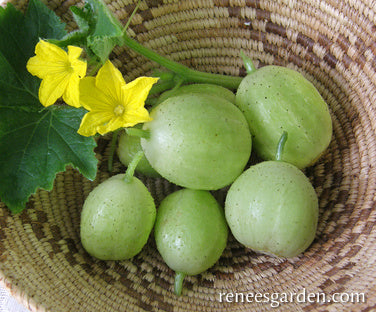

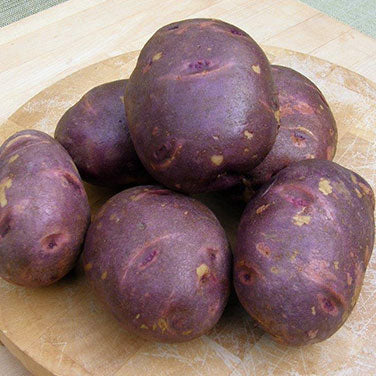

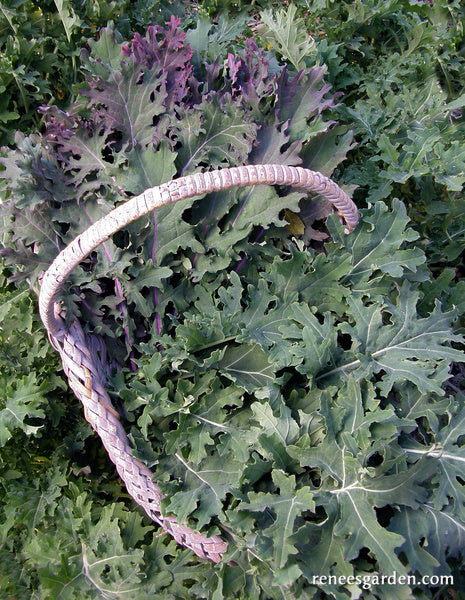

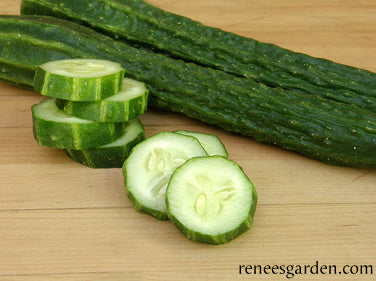



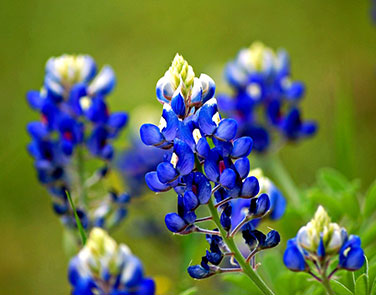


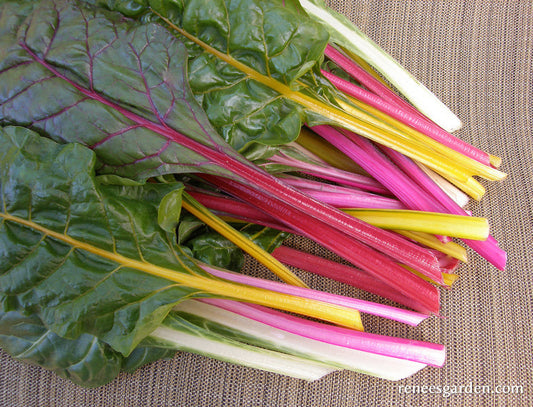

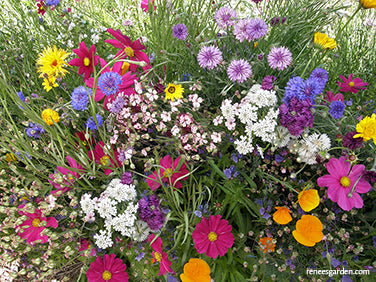

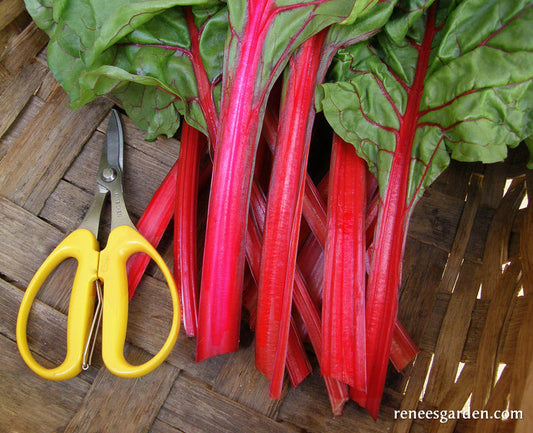

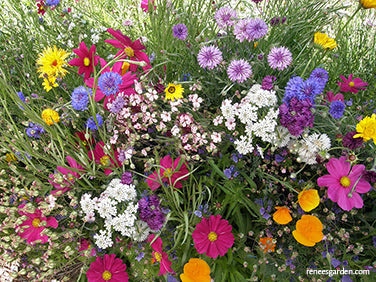

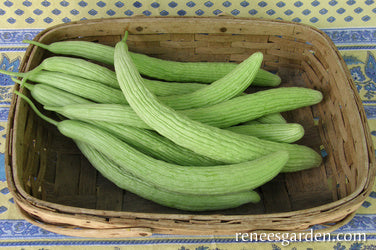





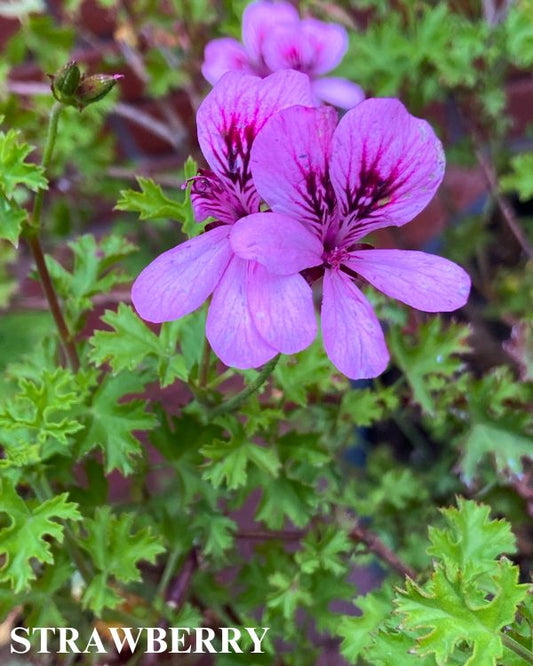
 See Full Description
See Full Description